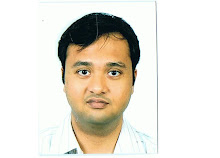"One type of balance, as described by Dr. Stephen Covey in his book ‘‘The Seven Habits of Highly Effective People,” is the balance of production with production capability, or the ‘‘P⁄PC” balance. This P⁄PC balance is essentially the right amount of
(a) getting ready to do something (that is, working on your ability to produce) with
(b) actually doing it (that is, actually producing something).
The story that Covey tells to illustrate this point is Aesop’s fable of the goose that laid the golden eggs. A man had the good fortune to possess a goose that laid a golden egg every day. Lucky though the man was, he soon began to think he was not getting rich fast enough, and, imagining the bird must be made of gold inside, he decided to kill it to secure the entire store of precious metal at once. But when he cut it open he found it was just like any other goose. Thus, he neither got rich all at once, as he had hoped, nor enjoyed any longer the daily addition to his wealth."
from http://www.dcmilitary.com/stories/090706/tester_20060907002.shtml
Most businesses focus on P while ignoring PC. This is why they grow quickly in the beginning by reaching the numbers in the plan, but once they reach a certain stage, saturate and are unable to grow further. This is because they produce golden eggs without taking care of the goose, which dies a premature death.
The value of a business is the sum of its P and its PC. P is easily measurable by parameters such as annual revenues, profits, number of employees on the rolls, number of branch offices etc.
PC involves value of intangibles such as brand identity, customer satisfaction and loyalty, goodwill, competitive advantage and barriers to entry, processes, knowledge and know-how, trade secrets and quality of people.
In the early stages, a startup should focus on building PC, even at the expense of short term P. Once the startup has a certain level of PC, P can be generated, maintained, and expanded with ease.
Wednesday, September 5, 2007
Subscribe to:
Posts (Atom)
